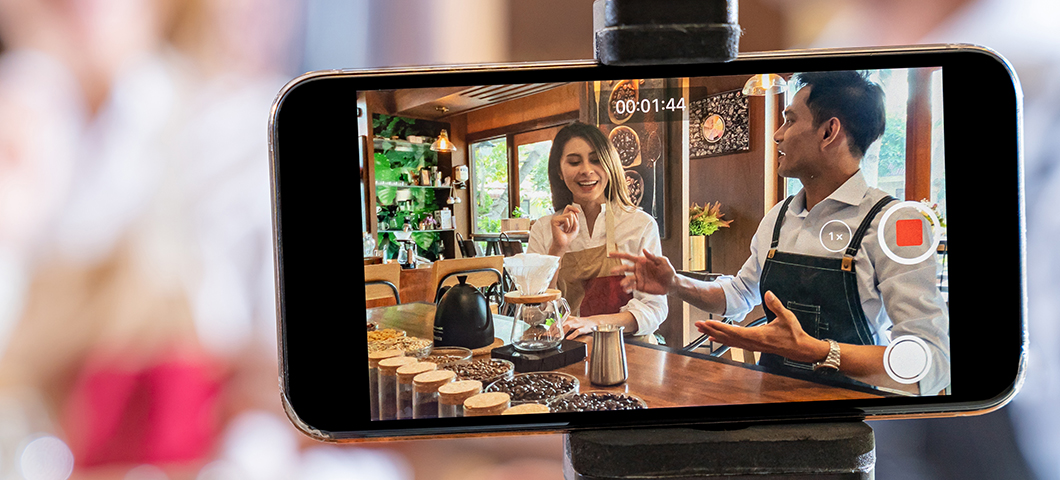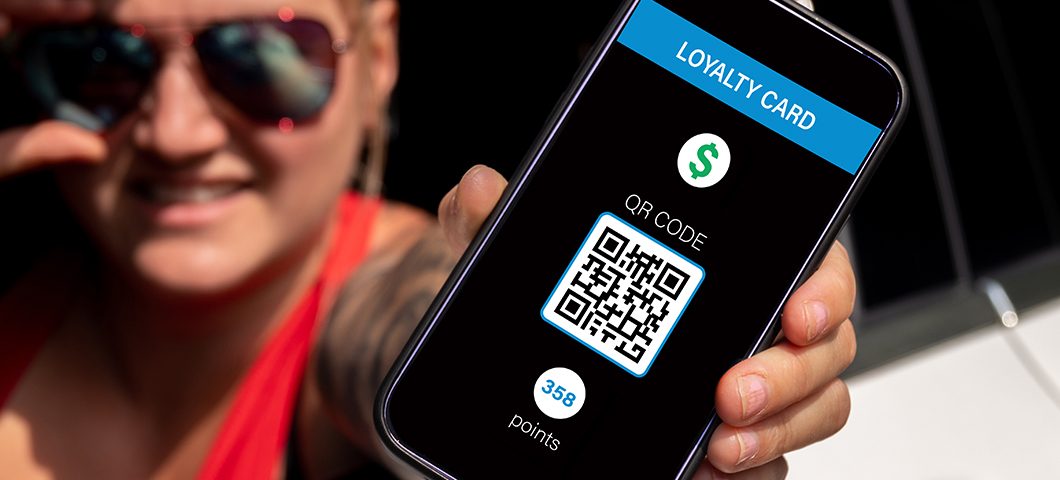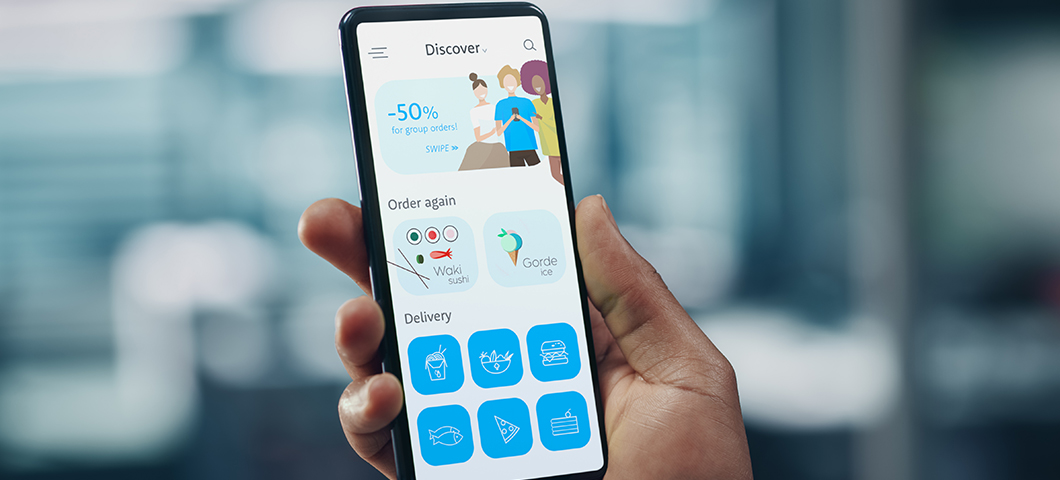
Restaurant Marketing Trends: What Every CMO Needs to Know for 2025 and Beyond
The restaurant industry stands at a pivotal crossroads where tradition meets technology, and consumer expectations evolve at an unprecedented pace. For Chief Marketing Officers (CMOs) in the restaurant sector, this presents both a challenge and an opportunity to reimagine how brands connect with guests, drive loyalty, and ultimately grow market share in an increasingly competitive landscape.
At evok, we understand that effective restaurant marketing transcends traditional advertising to encompass every touchpoint in the customer journey. As a specialized restaurant marketing agency, we’ve partnered with leading brands across the industry—from fast-casual concepts to fine dining establishments—to develop data-driven strategies that deliver measurable results in guest acquisition, frequency, and spend.
This comprehensive guide explores the most important restaurant marketing trends and strategies for 2025 and beyond. From leveraging user-generated content to implementing sophisticated loyalty programs and embracing emerging technologies, we’ll provide actionable insights to help your brand thrive in the evolving dining landscape.

The Digital Transformation of Restaurant Marketing
The restaurant industry’s digital transformation has accelerated dramatically, reshaping how brands connect with guests before, during, and after their dining experiences. For CMOs navigating this changing landscape, understanding the nuances of digital engagement has become essential to marketing success.
Optimizing Your Restaurant’s Online Presence for Maximum Visibility
In today’s digital-first environment, your restaurant’s online presence serves as the foundation of your marketing strategy. Research shows that 91% of guests will check a restaurant’s website before ordering and 75% prefer to see an online menu and order on the website.
Creating a compelling digital presence requires attention to several key elements:
Website Optimization and Mobile Experience Your restaurant’s website must deliver a seamless, mobile-friendly experience that reflects your brand identity while providing essential information. This includes:
- Professional food photography that accurately represents your menu offerings
- Easy-to-find location details, hours of operation, and reservation capabilities
- Mobile-responsive design that adapts to any device
- Fast loading times (under 3 seconds) to prevent abandonment
- Clear call-to-action buttons for reservations, ordering, or contact
Google Business Profile Mastery With 62% of consumers using Google to find restaurant information, optimizing your Google Business Profile has become non-negotiable. A complete profile includes:
- Accurate business information (address, hours, phone number)
- Regular updates to reflect seasonal hours or special events
- Menu integration showing current offerings and prices
- High-quality images of your establishment and popular dishes
- Strategic use of relevant attributes (outdoor seating, delivery options, etc.)
- Regular monitoring and response to customer reviews
Local SEO Strategies for Neighborhood Dominance Location-based searches like “restaurants near me” continue to drive significant traffic, making local SEO essential for visibility. Effective strategies include:
- Location-specific content highlighting neighborhood connections
- Consistent NAP (Name, Address, Phone) information across all platforms
- Localized keywords in website content and meta descriptions
- Backlinks from local business associations and community partners
- Schema markup to help search engines understand your business information
- Targeted local citations in relevant directories and review sites
Leveraging Social Media Platforms to Showcase Your Dining Experience

Social media has transformed from a supplementary marketing channel to an essential platform for restaurant brand building, engagement, and direct revenue generation. Platforms like Instagram, TikTok, and Facebook have become virtual storefronts where diners discover new restaurants and share their experiences.
Visual Storytelling on Instagram and TikTok Visual platforms offer unparalleled opportunities to showcase your culinary creations and dining atmosphere:
- Behind-the-scenes content highlighting chef techniques and ingredient sourcing
- User-generated content featuring guest experiences and favorite dishes
- Short-form videos showcasing signature cocktails or dessert preparations
- Instagram Reels and TikTok videos demonstrating plating techniques or kitchen operations
- Instagram Stories for limited-time offers and daily specials
- Virtual tours of your dining space and private event areas
Building Community Through Facebook Groups and Events While Instagram and TikTok excel at visual content, Facebook provides powerful tools for community building:
- Private groups for loyal customers offering exclusive content and promotions
- Event pages for special dinners, tastings, or chef collaborations
- Live videos featuring cooking demonstrations or cocktail tutorials
- Targeted local advertising to reach potential guests within specific geographic areas
- Customer service integration through Messenger
- User polls and feedback collection to inform menu development
Harnessing User-Generated Content for Authentic Marketing User-generated content (UGC) represents one of the most powerful tools in restaurant marketing, with 84% of consumers stating that they trust peer recommendations more so than other forms of advertising:
- Branded hashtag campaigns encouraging guests to share their experiences
- Feature walls or photo opportunities designed specifically for social sharing
- Incentives for guests who create and share content
- Regular showcasing of guest content across your own channels
- Influencer partnerships with local food bloggers and social media personalities
- Clear processes for obtaining permission to repurpose guest content
Embracing Emerging Platforms and Technologies
While established digital channels remain important, forward-thinking restaurant marketers must continually explore emerging platforms and technologies that present new opportunities for guest engagement.
Interactive Ordering Experiences Digital ordering platforms have evolved beyond basic functionality to become marketing tools in their own right:
- Personalized menu recommendations based on previous orders
- In-app loyalty program integration with personalized rewards
- Interactive visuals showcasing menu items with customization options
- Gamification elements to encourage repeat ordering and new item trials
- Seamless delivery tracking with real-time updates
- Post-order feedback collection for continuous improvement
Voice Search Optimization With voice assistants becoming increasingly common, optimizing for voice search queries presents a significant opportunity:
- Conversational keyword phrases that match natural speech patterns
- FAQ pages addressing common voice search questions about your restaurant
- Location-based voice search optimization for “near me” queries
- Voice-activated ordering capabilities through smart devices
- Voice-optimized local business listings and directory information
Augmented Reality Menu Experiences Augmented reality (AR) is creating new possibilities for interactive menu presentation:
- AR-enabled menus showing 3D representations of dishes before ordering
- Nutritional information overlays for health-conscious diners
- Virtual chef introductions explaining signature dishes
- Interactive cocktail presentations showing preparation methods
- AR food photography filters for social media sharing
Building Customer Loyalty Through Strategic Marketing

In an industry where acquiring a new customer can cost five times more than retaining an existing one, building customer loyalty represents one of the most valuable objectives for restaurant marketers. Strategic loyalty initiatives not only drive repeat business but also create brand advocates who amplify your marketing through word-of-mouth and social sharing.
Developing Sophisticated Loyalty Programs That Drive Repeat Visits
Loyalty programs have evolved far beyond simple punch cards to become sophisticated engagement platforms that collect valuable customer data while incentivizing repeat visits and increased spending.
Data-Driven Personalization Modern loyalty programs leverage customer data to create highly personalized experiences:
- Customized rewards based on individual preferences and ordering history
- Personalized anniversary and birthday offers
- Targeted promotions for lapsed customers to encourage return visits
- Surprise-and-delight moments for your most valuable guests
- Tailored communication based on dining frequency and preferences
- Predictive recommendations for new menu items based on past orders
Tiered Loyalty Structures Implementing tiered programs encourages increased frequency and spend while creating aspirational status levels:
- Clear benefits at each tier with transparent qualification requirements
- Exclusive experiences for top-tier members (chef’s table access, early reservations)
- Recognition elements that showcase status (priority seating, personalized service)
- Accelerated earning opportunities during non-peak periods
- Special access to limited-time offerings or collaborations
- Anniversary celebrations of loyalty program milestones
Subscription Models for Predictable Revenue Subscription offerings are creating new opportunities for recurring revenue and deeper guest relationships:
- Monthly dining passes with exclusive benefits
- Coffee or beverage subscriptions for regular customers
- Meal plan options for busy professionals
- Access to exclusive menu items not available to the general public
- Special event subscription series with themed dinners
- Wine club memberships with regular tastings and education
Creating Experiential Marketing That Strengthens Emotional Connections
In an era of unlimited dining options, creating memorable experiences that forge emotional connections with guests has become a critical differentiator. Experiential marketing transcends traditional promotions to create immersive moments that customers eagerly share and remember.
Immersive Dining Events Special event programming creates unique experiences that drive both immediate revenue and long-term loyalty:
- Collaborative chef dinners featuring visiting culinary talent
- Themed dining experiences tied to seasons, holidays, or cultural moments
- Interactive cooking classes and demonstrations
- Producer dinners highlighting specific farms, breweries, or wineries
- Global cuisine exploration series with regional menu takeovers
- Exclusive tasting menus with storytelling elements
Community Engagement Initiatives Connecting with your local community creates authentic relationships while generating positive brand associations:
- Partnerships with local charities and nonprofit organizations
- Neighborhood celebration events highlighting local culture
- Cooking demonstrations at farmers’ markets or community centers
- School fundraising nights with percentage-of-sales donations
- Participation in local food festivals and culinary events
- Sustainability initiatives addressing community-specific concerns
Behind-the-Scenes Access Providing exclusive access creates a sense of insider connection that builds lasting loyalty:
- Kitchen tours showcasing culinary operations
- Meet-the-chef experiences for loyal customers
- Ingredient sourcing field trips to local farms or producers
- New menu item tasting panels for selected guests
- Recipe sharing through exclusive content or classes
- Spirits or wine education events with producers
Leveraging Limited-Time Offers and Seasonal Promotions
Strategic limited-time offers (LTOs) and seasonal promotions create urgency while giving customers new reasons to visit. When executed properly, these promotions drive immediate traffic while reinforcing your core brand values.
Strategic LTO Development Effective limited-time offers balance novelty with operational feasibility:
- Seasonal ingredient showcases highlighting peak-freshness produce
- Collaborative menu items featuring local producers or artisans
- Heritage recipe revivals with modern interpretations
- Global flavor explorations tied to culinary trends
- Innovative presentations of familiar comfort foods
- Limited-batch specialties with defined availability periods
Promotional Calendar Optimization A strategic promotional calendar aligns marketing initiatives with business objectives:
- Counter-cyclical promotions to drive traffic during traditionally slower periods
- Data-driven timing based on historical performance patterns
- Complementary scheduling that avoids cannibalizing core offerings
- Sufficient runway for promotion while maintaining urgency
- Cross-promotion opportunities with beverage or dessert pairings
- Graduated rollout strategies for multi-location operations
Exclusivity Marketing Creating a sense of exclusivity drives both immediate action and social sharing:
- Limited-quantity daily specials with transparent availability
- Members-only access periods for new menu items
- Secret menu items accessible through specific channels
- Reservation-only tasting experiences with limited seating
- Early access for loyalty program members to seasonal offerings
- Waitlist strategies for high-demand items or experiences
Technology Integration for Enhanced Guest Experiences

Technology has become an integral part of the dining experience, from initial discovery through post-visit engagement. Forward-thinking restaurant marketers are leveraging technology not just as an operational tool but as a key differentiator in their marketing strategy.
Implementing Data-Driven Personalization Across the Customer Journey
The collection and strategic application of customer data enables unprecedented personalization opportunities throughout the guest experience. This data-driven approach creates more relevant interactions while improving marketing efficiency.
Customer Data Collection and Unification Building a comprehensive customer data platform provides the foundation for personalization:
- Integration of POS, reservation, and online ordering data
- Loyalty program insights, including preferences and behavior patterns
- Website and app interaction tracking to identify customer interests
- Survey and feedback integration for sentiment analysis
- Social media engagement monitoring and analysis
- Email and SMS response data to refine communication strategies
Personalized Marketing Automation Automation tools enable scaled personalization across multiple customer touchpoints:
- Triggered communications based on specific customer behaviors
- Customer journey mapping with tailored messaging at each stage
- Automated win-back campaigns for lapsed customers
- Special occasion recognition with personalized offers
- Recommendation engines based on ordering history and preferences
- Dynamic content customization in email and app communications
Predictive Analytics for Anticipatory Service Advanced analytics enables restaurants to anticipate guest needs before they’re expressed:
- Predicted order preferences based on historical patterns
- Table selection recommendations based on past visits
- Personalized timing suggestions for optimal dining experiences
- Proactive dietary accommodation based on previous orders
- Staffing optimizations based on guest preference patterns
- Inventory planning informed by customer preference forecasting
Leveraging Artificial Intelligence for Enhanced Marketing Effectiveness
Artificial intelligence is transforming restaurant marketing by enabling more sophisticated analysis, automation, and personalization at scale. Forward-thinking brands are incorporating AI to improve both efficiency and effectiveness.
AI-Powered Customer Insights Advanced AI tools provide a deeper understanding of customer preferences and behaviors:
- Sentiment analysis of reviews and social mentions
- Pattern recognition in ordering and spending behaviors
- Customer segmentation based on multiple behavioral variables
- Predictive modeling of customer lifetime value
- Churn prediction with early intervention opportunities
- Image recognition for analyzing user-generated content
Conversational AI and Chatbots AI-driven conversation tools enhance customer service while gathering valuable insights:
- 24/7 reservation assistance with natural language processing
- Automated order-taking with customization capabilities
- Instant response to common questions and concerns
- Proactive engagement based on website behavior
- Personalized menu recommendations and suggestions
- Feedback collection with natural conversation flows
AI for Content Creation and Optimization AI tools are increasingly valuable for content development and refinement:
- Menu description optimization based on performance data
- Image selection guidance for maximum engagement
- Subject line and call-to-action testing for email campaigns
- Social media copy optimization for different platforms
- Timing recommendations for content publication
- Performance prediction for promotional language
Mobile Integration for Seamless Guest Experiences
As smartphone usage continues to dominate consumer behavior, integrating mobile technology throughout the guest journey has become essential for restaurants seeking to meet customer expectations.
Mobile Ordering and Payment Evolution Mobile ordering has evolved from a convenience to an expectation:
- Streamlined ordering interfaces with minimal steps to completion
- Saved favorites and quick reorder capabilities
- Multiple payment options including digital wallets and split payments
- Order-ahead timing optimization with location awareness
- Customization visualization with interactive elements
- Order accuracy verification with visual confirmation
Mobile Loyalty and Rewards Access Smartphone-based loyalty programs offer enhanced convenience and engagement:
- Real-time points balance and reward availability
- Location-triggered offers when near restaurant locations
- Easy reward redemption integrated with ordering
- Progress visualization toward the next tier or reward
- Gamification elements accessible through mobile interface
- Personalized challenge completion for bonus rewards
Mobile-Enhanced On-Premise Experience Mobile technology is increasingly enhancing the in-restaurant experience:
- Tableside ordering with customization options
- Digital menus with detailed ingredient information
- Augmented reality experiences activating through mobile devices
- Wait time management with real-time updates
- Seamless payment processing without server interaction
- Post-dining feedback collection with incentives
Measuring Success: Analytics and KPIs for Restaurant Marketers
In an increasingly data-rich environment, successful restaurant marketers must establish robust measurement frameworks to evaluate performance, optimize campaigns, and demonstrate marketing’s contribution to business objectives.
Establishing Comprehensive KPI Frameworks Beyond Traditional Metrics
While traditional metrics like cover counts and check averages remain important, sophisticated restaurant marketers are establishing more comprehensive KPI frameworks that capture the full impact of their efforts.
Customer Acquisition Metrics Beyond simple customer counts, these metrics evaluate the effectiveness of acquisition efforts:
- Customer acquisition cost (CAC) by channel and campaign
- New customer retention rate after first visit
- Marketing-influenced first-time visits
- Acquisition source attribution and tracking
- Conversion rates from different marketing touchpoints
- Cost per acquisition trend analysis over time
Loyalty and Retention Indicators These metrics focus on measuring the strength of ongoing customer relationships:
- Customer retention rate by segment and cohort
- Visit frequency patterns with trend analysis
- Visit interval consistency or compression
- Customer lifetime value calculation and trends
- Loyalty program engagement levels
- Churn prediction and prevention effectiveness
Digital Engagement Measurements Digital metrics provide insights into online marketing effectiveness:
- Website engagement metrics beyond simple traffic counts
- Online ordering conversion rates and abandonment analysis
- Social media engagement relative to industry benchmarks
- Email marketing performance with segment comparisons
- App installation and active usage rates
- Cross-platform attribution for multi-touch journeys
Financial Impact Metrics These metrics connect marketing activities directly to financial outcomes:
- Return on marketing investment (ROMI) by campaign and channel
- Incremental revenue attribution to specific marketing initiatives
- Profit margin impact of marketing-driven product mix changes
- Daypart distribution influenced by marketing efforts
- Price sensitivity measures across different customer segments
- Promotion profitability analysis, including operational costs
Attribution Modeling for Multi-Channel Restaurant Marketing
With customers interacting across multiple marketing channels before converting, sophisticated attribution modeling has become essential for understanding marketing effectiveness and optimizing channel mix.
Multi-Touch Attribution Approaches These models distribute credit across multiple marketing touchpoints:
- Time-decay models giving more credit to touchpoints closer to conversion
- Position-based attribution highlighting first and last interactions
- Linear attribution distributing credit equally across all touchpoints
- Data-driven attribution using algorithmic analysis of conversion patterns
- Custom attribution models reflecting unique customer journey patterns
- Incrementality testing to isolate true marketing impact
Online-to-Offline Tracking Methods These techniques bridge the gap between digital marketing and physical restaurant visits:
- QR code check-ins connecting digital campaigns to in-store visits
- Loyalty program integration for closed-loop tracking
- Promotional code redemption tracking across channels
- Location-based mobile engagement monitoring
- Post-visit surveys with marketing source identification
- WiFi login data connecting to customer profiles
Attribution Technology Implementation Technical solutions enabling more sophisticated attribution:
- Customer data platform integration across marketing systems
- Unified customer identifiers across digital and physical touchpoints
- Advanced analytics platforms with attribution modeling capabilities
- Machine learning implementation for predictive attribution
- Real-time data processing for immediate optimization
- Visualization tools for cross-channel attribution insights
Leveraging Competitive Intelligence for Strategic Advantage
Understanding competitive positioning and performance provides essential context for evaluating your own marketing effectiveness and identifying strategic opportunities.
Market Share Analysis These approaches help quantify competitive positioning:
- Geographic market penetration relative to competitors
- Share of voice in digital and traditional media
- Social media engagement share compared to key competitors
- Search visibility for high-value keywords
- Review volume and sentiment benchmarking
- Category-specific performance metrics versus industry
Competitive Offering Monitoring Systematic tracking of competitor activities informs strategic decisions:
- Menu pricing and positioning analysis
- Promotional calendar tracking and response planning
- New item introduction monitoring and performance assessment
- Limited-time offer evaluation for effectiveness
- Loyalty program competitive comparison
- Technology adoption patterns across competitors
Consumer Perception Research Understanding how customers view your brand relative to competitors:
- Brand attribute mapping across competitive set
- Value perception tracking over time
- Consideration set analysis among target audiences
- Competitive preference drivers among different segments
- Unmet needs identification across the marketplace
- Satisfaction benchmarking against key competitors
Positioning Your Restaurant for Marketing Success

The restaurant marketing landscape is evolving rapidly, driven by technological innovation, changing consumer expectations, and increasing competition. CMOs who embrace data-driven strategies, personalized guest experiences, and sophisticated measurement approaches will position their brands for sustainable growth and competitive advantage.
At evok, we partner with restaurant brands to navigate this complex environment, developing innovative marketing strategies that drive guest acquisition, loyalty, and revenue growth. As a specialized restaurant marketing agency, we combine deep industry knowledge with cutting-edge marketing expertise to create customized solutions for today’s most pressing restaurant marketing challenges.
The future of restaurant marketing will be characterized by ever-greater personalization, seamless technology integration, and increasingly sophisticated measurement capabilities. By establishing the right foundation now—building robust customer data infrastructure, creating emotionally resonant brand experiences, and implementing comprehensive measurement frameworks—your restaurant can thrive in this evolving landscape. To learn more about how evok can help your restaurant develop and implement a comprehensive marketing strategy for 2025 and beyond, contact our team of restaurant marketing specialists today.